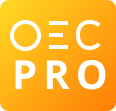Saudi Arabia-Ethiopia Trade: In 2023, Saudi Arabia exported $1.13B to Ethiopia. The main products that Saudi Arabia exported to Ethiopia were Refined Petroleum ($938M), Propylene Polymers ($82.8M), and Ethylene Polymers ($47.7M). Over the past 5 years the exports of Saudi Arabia to Ethiopia have increased at an annualized rate of 38.5%, from $221M in 2018 to $1.13B in 2023.
In 2023, Saudi Arabia did not export any services to Ethiopia.
Ethiopia-Saudi Arabia Trade: In 2023, Ethiopia exported $304M to Saudi Arabia. The main products that Ethiopia exported to Saudi Arabia were Coffee ($233M), Cut Flowers ($25.3M), and Bovine Meat ($20.2M). Over the past 5 years the exports of Ethiopia to Saudi Arabia have increased at an annualized rate of 9.39%, from $194M in 2018 to $304M in 2023.
In 2023, Ethiopia did not export any services to Saudi Arabia.
Comparison: In 2023, Saudi Arabia ranked 36 in the Economic Complexity Index (ECI 0.76), and 26 in total exports ($300B). That same year, Ethiopia ranked 101 in the Economic Complexity Index (ECI -0.84), and 137 in total exports ($3.97B).

